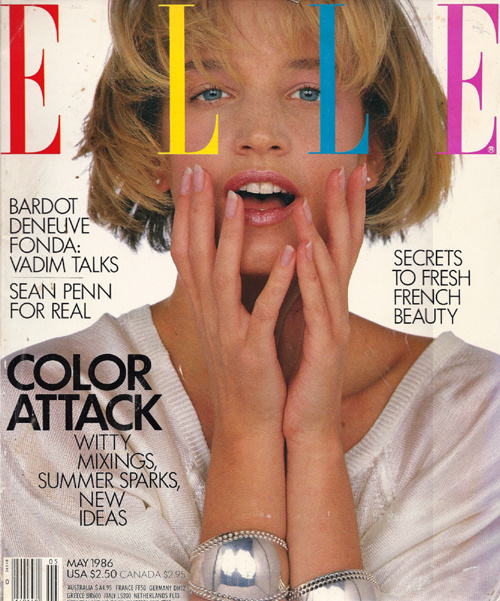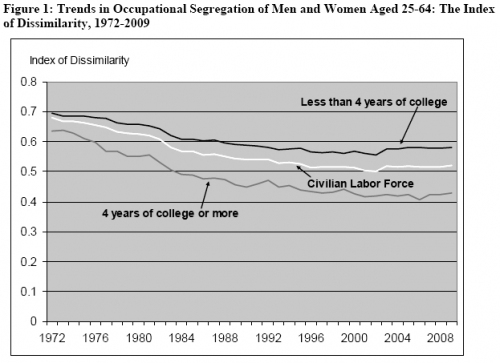Dan S. alerted us to an image, purportedly of an article from the May 13, 1955, episode of Housekeeping Monthly. In it there is a photo of a woman bending over an oven with a list of tips for being a good wife, such as “a good wife always knows her place.” We’ve gotten this image before and never posted on it, much like the list on “How to Be a Good Wife,” attributed around the web to a “1950s home economics textbook.”
So why haven’t we posted the image before? Because it’s a fake. According to Snopes, the list was circulating widely on its own long before it suddenly appeared with the damning image…which is a completely unrelated image from a cover of John Bull magazine (not Housekeeping Monthly) that appeared in 1957, not 1955. Notice the text along the upper right corner of the image–it says “Advertising Archives.” According to Snopes, no one has ever turned up the economics textbook the “How to Be a Good Wife” list supposedly comes from, either.
So what gives? Why do these hoax 1950s-era images/lists keep appearing? I think Snopes makes an interesting case:
It has become fashionable to portray outdated societal behaviors and attitudes — ones we now consider desperately wrongheaded — to be worse than they really were as a way of making a point about how much we’ve improved. When we despair over the human condition and feel the need for a little pat on the back, a few startling comparisons between us modern enlightened folks and those terrible neanderthals of yesteryear give us that. We go away from such readings a bit proud of how we’ve pulled ourselves up by our bootstraps and with our halos a bit more brightly burnished.
The juxtaposition of wonderful modernity with a tawdry past also serves to reinforce the ‘rightness’ of current societal stances by making any other positions appear ludicrous. It reminds folks of the importance of holding on to these newer ways of thinking and to caution them against falling back into older patterns which may be more comfortable but less socially desirable. Such reinforcement works on the principle that if you won’t do a good thing just for its own sake, you’ll surely do it to avoid being laughed at and looked down upon by your peers.
A typical vessel for this sort of comparison is the fabricated or misrepresented bit of text from the “olden days,” some document that purportedly demonstrates how our ancestors endured difficult lives amidst people who once held truly despicable beliefs.
Of course, as the Snopes article goes on to discuss, all kinds of very sexist stuff existed in the ’50s, and there were home-ec textbooks, magazines, etc., that included suggestions along the lines of those listed above.
Given that, it’s not shocking that when we see images of this sort, they immediately seem authentic, and get re-posted around the web despite the sketchy aspects of their origin stories. It’s not like we’ve never posted anything on Soc Images that we later figured out was a hoax (we also get things that we hope, desperately, are hoaxes but turn out to be real).
So there’s a truth behind the general gist of these types of lists, but many of the images themselves are fakes, created to make fun of our hopelessly, and hilariously, sexist past. And given how many real examples of sexist propaganda you could find from the 1950s, it’s worth pondering we find so many fake ones, and how, for some people, they may function to delegitimate concerns about gender inequality or sexism today, because come on, ladies — look how much better we have it than our grandmas did!
Gwen Sharp is an associate professor of sociology at Nevada State College. You can follow her on Twitter at @gwensharpnv.








